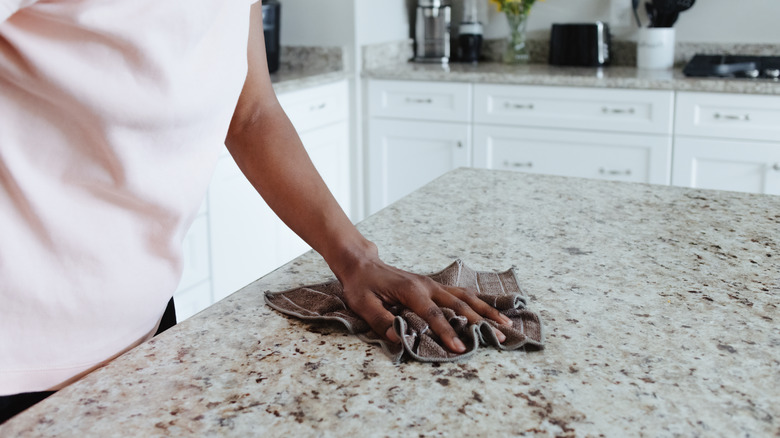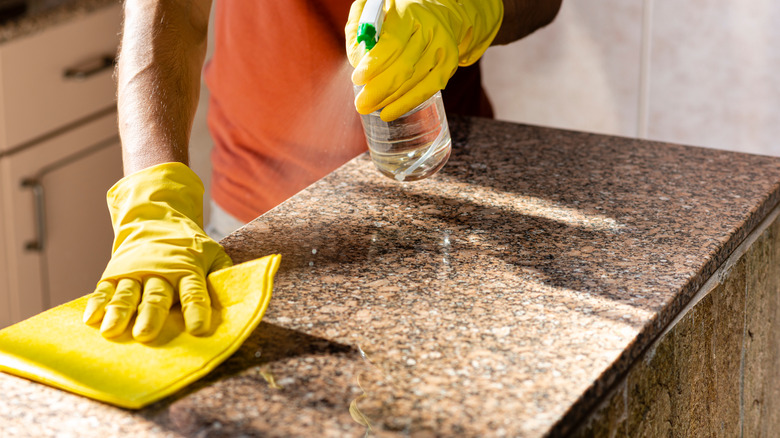The Cleaning Mistake Everyone Makes With Granite Countertops
There are so many unbeatable advantages to choosing granite countertops, whether in the kitchen or bathroom. The stone is super strong and heat-resistant, so it won't get a burn mark if you leave a hot pan or curling iron on it. It's also scratch-resistant and stain-proof, which means you don't have to be too cautious with it. It's also super easy to clean, not requiring any specialty sprays or pH-neutral cleaners. However, although seemingly easy to take care of, one of the most common mistakes people make with their granite is not cleaning it frequently enough.
One of the things you should never do if you have granite countertops is wait to clean up a spill. We often get cocky with this particular surface, letting a spilled glass of wine sit for a moment before we get a sponge or let splattered pasta sauce sit on the counter framing the stovetop. However, you never know where your sealer has worn off or faded. If you leave these messes on it and the protective barrier is gone, you will, in fact, see a stain.
How to properly clean a granite countertop
When you see a spill or mess, jump into action by instantly grabbing your sponge or cloth and blotting at the mess. Don't let it sit there, and don't let it dry on the surface. Instead, clean it with a few drops of dish soap, warm water, and a microfiber cloth. Mix the water and soap together, then dip your microfiber cloth in the mixture and wipe down the surface. Finally, buff it dry with a new microfiber cloth.
While this should become habit, you should also inspect your countertops annually to see if the sealant is wearing off in any spots. In order to do that, you will need to know the warning signs. If you run your hand across it and feel rough patches, this is a good indicator the protective layer has worn off, and you're now touching the stone underneath. If you notice dark patches or discoloration, that is also a dead giveaway that the sealant is no longer up to snuff. Lastly, to know for sure, conduct the water test. Let a few droplets fall onto the counter. If they bead, you know the sealant is intact. If the surface soaks it up, the sealant has been compromised.

